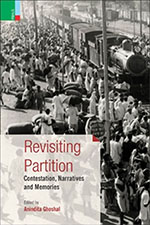It is now generally accepted that the Partition of India happened in two quite different ways. In the West, it was short, swift, extremely violent, and quite definitive, while in the East the process was prolonged, fluid, and relatively less bloody. Thus, the historians have termed the Partition in East India as the ‘Long Partition’. Another difference between these two processes of Partition seems to be associated with the dual process of forgetting and remembrance. It so appears that while in the West the process of forgetting was more dominant, in the East memories served as the anchor to a lost land, particularly in case of those who migrated to India. In the case of East Bengal, which went through traumatic experiences of two Partitions, remembrance is quite often conflicted about what is to be retained or discarded.
This important volume is concerned with the ‘Long Partition’ on the Eastern side and explores the varied processes, events, mobilizations, and memories. Divided in five parts, it comprises 18 chapters by different authors. Added by one general and five sectional introductions, this volume is well organized and covers certain aspects of Partition experiences which have been somewhat neglected hitherto, such as processes and experiences of Partition in North East India and Bangladesh.

